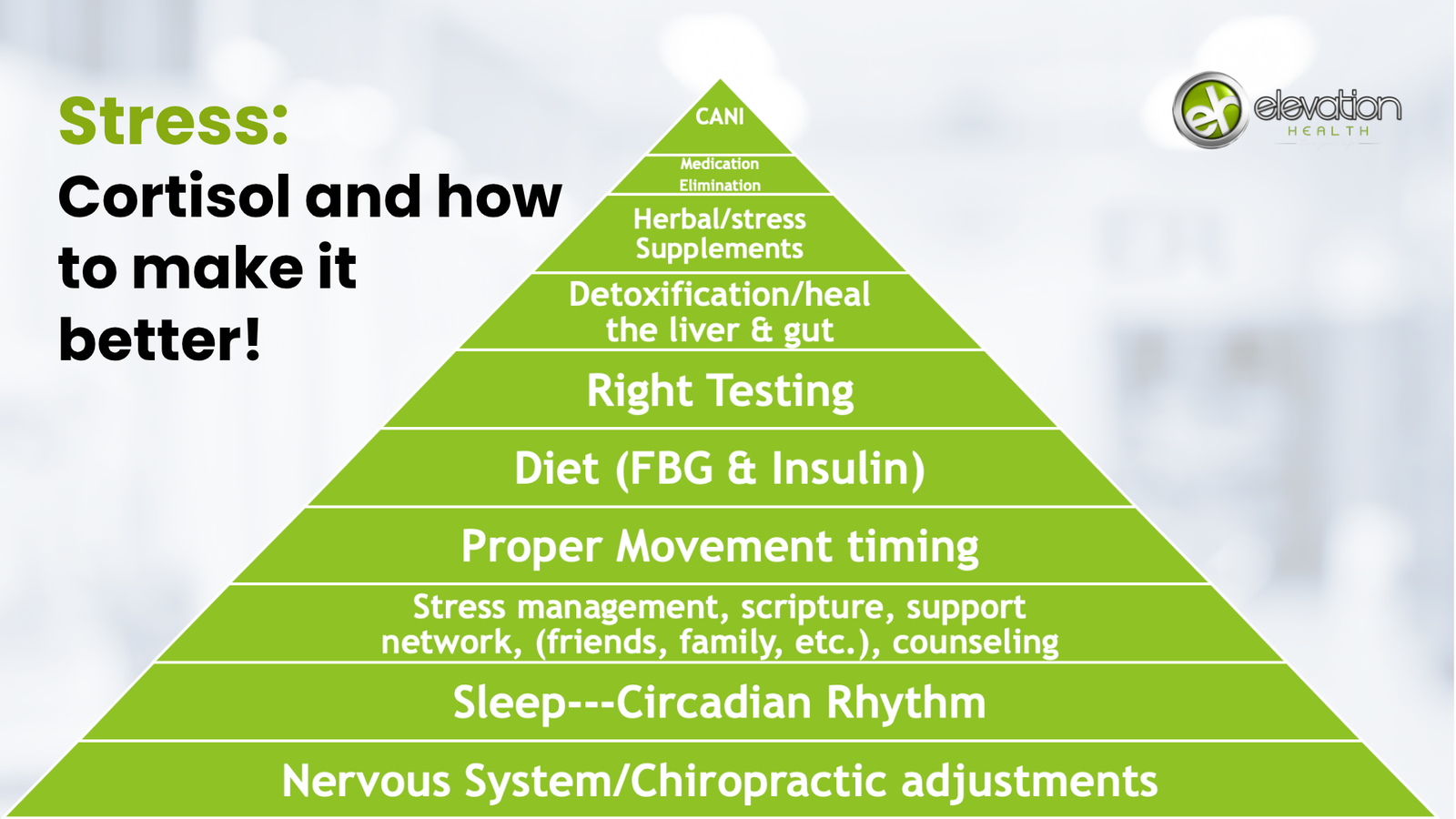ENJOY FREE SHIPPING ON ORDERS OVER $99
ENJOY FREE SHIPPING ON ORDERS OVER $99
Cortisol, Digestion, and the Hidden Hormone Hijack (How to Reset Your Stress Chemistry)
November 03, 2025 2 min read

The Control Tower and the Siren: How Cortisol Takes Over
Cortisol is the body’s built-in emergency response. In a real crisis, it clears the roads, diverts energy, and keeps you alive. The modern problem is that many lives keep the siren on—constant notifications, unresolved grief, late-night screens, shallow sleep, and meals on the run. Over time, this instructs the hypothalamus to prioritize survival over everything else.
When that happens, spare systems downshift: digestion slows, reproductive hormones ebb, thyroid conversion stalls, and wound repair lags. The symptoms feel scattered—bloating here, fatigue there, mood changes later—but they share a single upstream story: chronic emergency mode.
Cortisol Steal and the Disappearing Hormones
Pregnenolone feeds the whole hormone family tree. Under stress, the tree leans hard toward cortisol, a dynamic often called cortisol steal. Progesterone drops, DHEA output wanes, and the anabolic signals that maintain brain calm, deep sleep, and muscle tone go quiet.
Unchecked, this looks like restless nights, PMS flares, heavier perimenopause, low drive, slower recovery, and creeping visceral fat. The fix isn’t to shout louder at the symptoms; it’s to turn down the alarm and restore raw materials.
Digestion in a Stress World: Why Less Acid = More Problems
In “fight or flight,” the stomach is told to produce less acid. Protein is poorly broken down, food lingers, and immune reactivity rises as larger fragments pass into the intestines. Reflux, bloat, and irregularity follow—not because the body is broken, but because digestion isn’t being prioritized.
Start with the signal: calm the nervous system before meals. Sit down. Breathe. Add digestive bitters, chew thoroughly, and hydrate away from meals. Support the liver daily with cruciferous vegetables, beets, lemon, and movement. As stomach acidity normalizes and bile flows, nutrient absorption returns and hormone conversion improves.
Structure, Sleep, and Movement: The Restoration Trifecta
The spine is a neural highway. Misalignments can irritate sympathetic branches and keep the gas pedal down. Chiropractic care restores the signal so the body can switch gears. Sleep then hardwires the change—consistent bedtimes, dark rooms, and digital sunsets are non-negotiable. Movement seals the deal. Brisk walking after meals stabilizes glucose and presses “reset” on cortisol; strength training rebuilds the metabolic engine that makes every hormone work better.
Together, these three inputs—structure, sleep, and movement—form a flywheel that lifts mood, steadies energy, and eases digestion.
A Simple Day to Calm Cortisol
Morning: sunlight, mineralized water, three minutes of breath and gratitude, and a protein-forward breakfast.
Midday: 10–15 minutes brisk walking after lunch, posture reset, and crucifers on the plate.
Evening: digital sunset, journaling or prayer, magnesium-rich foods, and a consistent bedtime in a cool, dark room.
Repeat for two weeks. Track how you feel on waking, your afternoon focus, your digestion after meals, and your sleep depth. Once your nervous system believes you, hormones follow.
